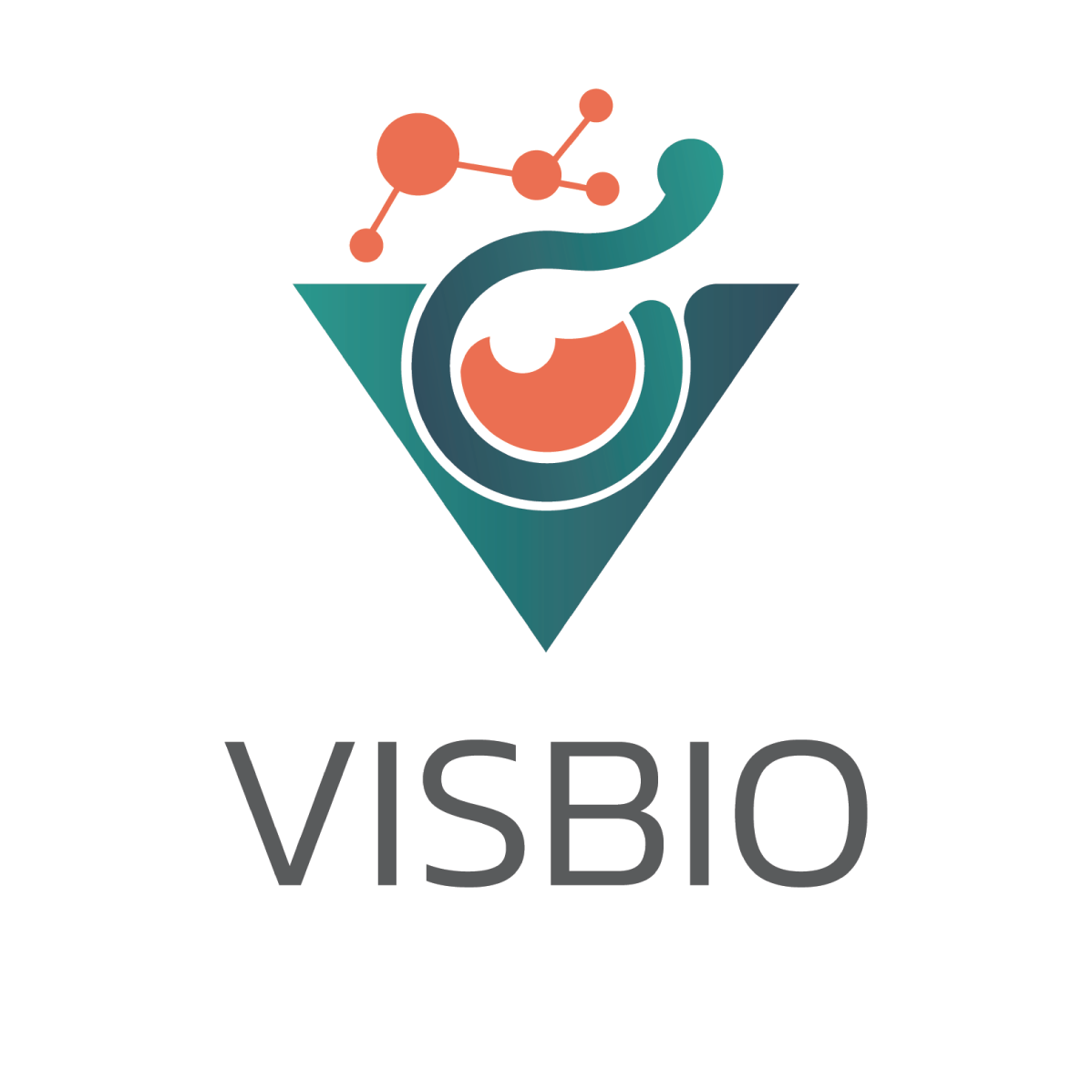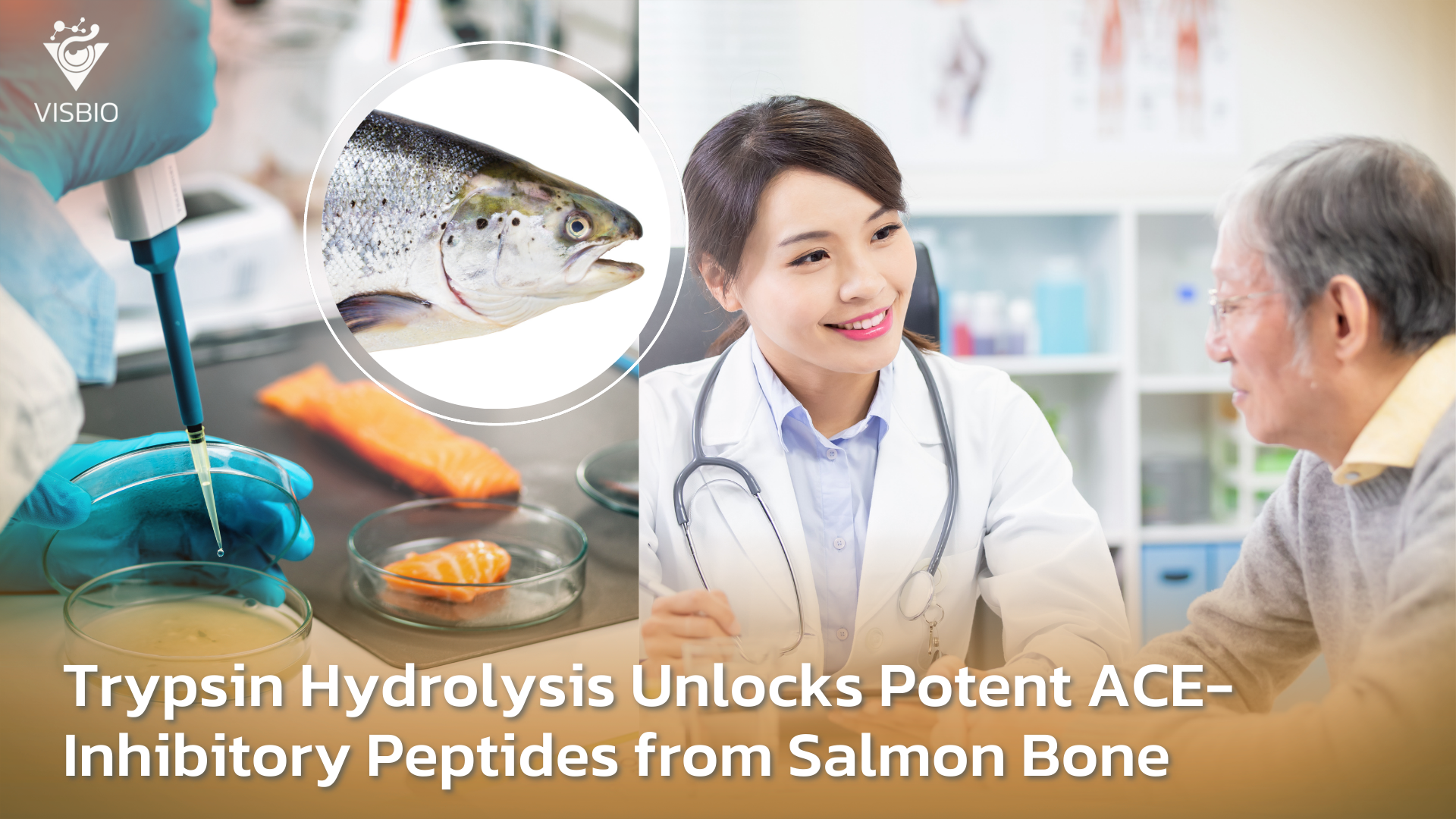Hypertension, or high blood pressure, is a silent global epidemic and a primary driver of cardiovascular disease (CVD), one of the leading causes of death worldwide. Projections indicate that by 2025, over 1.56 billion people will suffer from this condition, creating an immense and growing demand for effective treatments. While synthetic drugs that inhibit the Angiotensin I-Converting Enzyme (ACE) are widely used, they can be associated with undesirable side effects, prompting a significant market shift towards natural, safer alternatives. This article explores pioneering research and development that tackles this challenge by using advanced biotechnology to unlock the hidden value in industrial food byproducts.
A study led by a team of expert researchers, including Associate Professor Dr. Kiattawee Choowongkomon, demonstrates how a specific process, Trypsin Hydrolysis, can transform discarded salmon processing byproducts into a source of potent, natural ACE-inhibitory peptides. This innovative research showcases a complete journey from a common industrial waste stream to a high-value, scientifically validated ingredient with significant potential for the nutraceutical and pharmaceutical industries. This discovery paves the way for a new generation of cardiovascular health solutions that are both effective and sustainable.
The Science of Natural Blood Pressure Management
To appreciate the significance of this research, it’s essential to understand the body’s primary mechanism for regulating blood pressure. A key player in this system is the Angiotensin I-Converting Enzyme (ACE). The ACE enzyme performs a critical dual function: it converts a compound called angiotensin I into angiotensin II, a powerful vasoconstrictor that narrows blood vessels and raises blood pressure. Simultaneously, it breaks down bradykinin, a substance that naturally helps to keep blood vessels dilated and blood pressure low. Therefore, the net effect of ACE activity is an increase in blood pressure, and inhibiting its action is a clinically proven strategy for managing hypertension.
This research focuses on isolating natural bioactive peptides from salmon bone—a resource surprisingly rich in protein—that can perform this precise inhibitory function. By identifying peptides that can naturally block the ACE enzyme, this work offers a clear pathway to managing hypertension using a safe, food-derived ingredient rather than a synthetic pharmaceutical, aligning perfectly with modern consumer demands for natural and preventative health solutions.
A Sustainable Approach to Developing Bioactive Peptides
A core strength of this research lies in its sustainable and innovative methodology. Salmon bones, which are typically considered a low-value waste product from the fish processing industry, are an exceptionally rich source of proteins like collagen. Instead of being discarded and creating environmental waste, these bones were ingeniously repurposed as the raw material for a high-value health ingredient. This “waste-to-wealth” approach is a cornerstone of the circular economy, adding significant value back into the food processing industry and creating a compelling sustainability narrative for the final product.
The scientific process began by creating a fine powder from the salmon bones, which analysis revealed to contain nearly 40% high-quality protein. The researchers then performed a controlled enzymatic hydrolysis. The specific method chosen for this crucial step was Trypsin Hydrolysis. Trypsin is a well-characterized enzyme that acts like a pair of molecular scissors, precisely cleaving the large, complex proteins at specific amino acid sites. This controlled process breaks them down into smaller, more biologically active fragments known as bioactive peptides, creating a potent protein hydrolysate that serves as the starting point for isolating the most effective compounds.
Optimizing the Trypsin Hydrolysis Process for Maximum Potency
Creating an effective mixture of bioactive peptides is a matter of precision science. To maximize the potency of the salmon bone protein hydrolysate (SBPH), the research team employed Response Surface Methodology (RSM), a sophisticated statistical and mathematical technique used for process optimization. This method allows scientists to systematically analyze how multiple variables interact, enabling them to pinpoint the exact conditions needed to achieve the highest possible ACE-inhibitory activity from the Trypsin Hydrolysis process.
After conducting numerous experiments, the optimal conditions for production were identified as a temperature of 40.7°C, a hydrolysis time of 363.92 minutes (approximately 6 hours), and an enzyme-to-substrate (E/S) ratio of 0.42% (w/w). Under these precise and controlled conditions, the resulting hydrolysate demonstrated a powerful inhibitory effect, with an IC50 value of just 7.14 μg/mL. The IC50 value represents the concentration needed to inhibit 50% of the target enzyme’s activity, meaning a lower number indicates higher potency. This result confirmed that the initial peptide mixture was already a highly effective ingredient.
Isolating the Novel Peptide FCLYELAR
With a potent hydrolysate created, the next critical step was to isolate and identify the specific peptide responsible for this powerful biological activity. The team used a rigorous multi-step purification process to narrow down the search from a complex mixture to a single, pure compound.
- Ultrafiltration: The hydrolysate was first separated by molecular weight using ultrafiltration. This step confirmed that smaller peptides are more effective, as the fraction with a molecular weight of less than 0.65 kDa showed the most powerful ACE-inhibitory activity. The potency of this fraction was extraordinary, with an IC50 value of just 0.093 μg/mL—representing a massive 76-fold increase in potency from the initial hydrolysate.
- RP-HPLC Purification: This highly potent, low-molecular-weight fraction was then subjected to Reversed-Phase High-Performance Liquid Chromatography (RP-HPLC). This technique provides high-resolution separation, allowing the researchers to isolate individual peptides from the mixture based on their chemical properties. Out of sixteen resulting fractions from this process, the fraction labeled F7 was identified as the most active.
- Peptide Identification: Finally, using advanced mass spectrometry, the exact amino acid sequence of the peptide in the F7 fraction was identified as Phe-Cys-Leu-Tyr-Glu-Leu-Ala-Arg (FCLYELAR). This novel eight-amino-acid peptide was then chemically synthesized in its pure form and re-tested, revealing a potent IC50 value of 31.63 μM and confirming it as the key bioactive compound.
Unveiling a Unique Mechanism An Uncompetitive Inhibitor
To understand exactly how the FCLYELAR peptide works, the researchers studied its inhibition kinetics. The results, visualized in a Lineweaver-Burk plot, showed that the peptide acts as an uncompetitive inhibitor of ACE. This is a crucial and sophisticated finding. Unlike competitive inhibitors that fight the natural substrate for the enzyme’s main active site, an uncompetitive inhibitor binds to a different, allosteric location on the enzyme, but only after the substrate is already attached. This binding of the peptide to the enzyme-substrate complex changes the enzyme’s shape, rendering it less effective at completing its task.
This unique mechanism was further confirmed by molecular docking simulations. These computer models predicted that the FCLYELAR peptide does indeed bind to a non-active site on the ACE molecule, primarily through stable hydrogen bonds. The strong agreement between the experimental kinetic data and the computational predictions provides a high degree of confidence in this sophisticated mechanism. This deep mechanistic understanding is invaluable for establishing the ingredient’s credibility and differentiating it from other natural inhibitors.
Commercial Opportunities Created by Trypsin Hydrolysis
The discovery and characterization of the FCLYELAR peptide, made possible through advanced Trypsin Hydrolysis techniques, represent a significant opportunity for businesses in the nutraceutical, functional food, and pharmaceutical industries. The research provides a strong scientific foundation for developing high-value products that cater to the growing consumer demand for natural health solutions.
- Innovative Product Development: This novel peptide can be the key ingredient in a new line of dietary supplements, functional beverage shots, or specialized food products designed to support long-term cardiovascular health and manage hypertension.
- Powerful Sustainability Branding: The “waste-to-wealth” origin story is a powerful marketing tool in today’s eco-conscious market. Developing products from upcycled salmon bones appeals to environmentally aware consumers and aligns your brand with the principles of the circular economy.
- Scientific Market Differentiation: With a novel, scientifically validated, and potently effective peptide, your business can launch products that stand out in the crowded wellness market. The claims are backed by credible research and development, creating a strong point of difference.
Partnering with VISBIO for Cutting-Edge Nutraceutical Development
This study successfully demonstrates that industrial byproducts like salmon bones are a treasure trove of valuable bioactive compounds. The novel ACE-inhibitory peptide FCLYELAR has shown immense potential as a natural agent for managing hypertension. Translating this groundbreaking science into a market success requires strategic partnership. We invite companies focused on health, wellness, and sustainability to explore the commercialization opportunities of this unique technology.
Contact us today for a free, no-obligation consultation to discover how we can help you leverage this research to create your next innovative product.

About the Author:
Associate Professor Dr. Kiattawee Choowongkomon is a leading expert in biochemistry and proteomics, specializing in the development of bioactive compounds for therapeutic applications. His research bridges traditional medicinal knowledge with modern scientific innovation, creating impactful health solutions.


